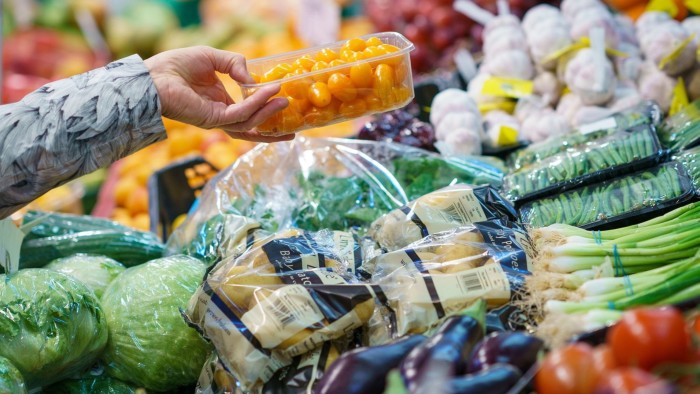Stay informed with free updates
Simply sign up to the UK inflation myFT Digest — delivered directly to your inbox.
UK food inflation has risen to the highest rate in more than a year as dry weather hits fruit and vegetable harvests and pushes up prices, according to industry data.
The annual rate of food inflation was 3.7 per cent in June, up from 2.8 per cent in May and the highest since March 2024, the British Retail Consortium said on Tuesday.
Helen Dickinson, chief executive of the BRC, said: “In the UK, fruit and vegetable prices increased due to the hot, dry weather, reducing harvest yields,” while prices of meat “have been impacted by high wholesale prices and more expensive labour costs”.
The Met Office reported that this spring was the warmest and sunniest spring for the UK on record. This has been a mixed blessing for farmers — early sun and heat in the spring boosted yields of some fresh produce like strawberries and tomatoes, but a lack of rainfall has stressed arable crops such as wheat and barley.
“From a UK point of view we’ve had huge pressure on outdoor production, and within Europe particularly there have been extremes of weather again, so cumulatively that adds up to cost pressures in the supply chain,” said Nigel Jenney, chief executive of trade group the Fresh Produce Consortium.
The UK imports 65 per cent of the fresh produce it consumes, according to FPC.
Global food prices were up an annual rate of 6 per cent in May, according to the UN Food and Agriculture Organization index, with dairy prices up 21 per cent and vegetable oil up 19 per cent.
The BRC figures come ahead of official UK inflation data for June, to be published on July 16. BRC and inflation data this year have shown a pick-up in food prices compared with most of 2024.
For May, the ONS last month reported sharp month-on-month price increases for meat, fish, dairy products, chocolate and confectionery, contributing to annual inflation of 3.4 per cent.
The Bank of England expects inflation to remain higher than its 2 per cent target for most of the year, driven by energy and food, though overall wage growth continues to outstrip the rate of price increases.
Elevated food prices could limit the pace of interest rate cuts this year as price growth has a greater impact on household inflation expectations than other items.
Markets are pricing in that the BoE will lower borrowing costs by a quarter point twice in the remainder of the year from the current 4.25 per cent.
The BRC said fresh food prices rose at an annual rate of 3.2 per cent in June, up from 2.4 per cent in May. The prices of ambient food, which can be stored at room temperature, rose at an annual rate of 4.3 per cent in June, up from 3.3 per cent in May.
The rise in food prices helped overall shop prices return to an annual rate rise of 0.4 per cent in June, from a 0.1 per cent decline in May. Non-food prices dropped at an annual rate of minus 1.2 per cent in June from minus 1.5 per cent in the previous month.
The BRC’s Dickinson said retailers had warned of price rises for consumers, citing higher employer national insurance contributions and national living wage costs introduced in April, along with mounting geopolitical tensions and the effects of climate change.
“Within three months of the costs imposed by last autumn’s Budget kicking in, headline shop prices have returned to inflation for the first time in close to a year,” she added.
Mike Watkins, head of retailer and business insight at NielsenIQ, which helps compile the data, said: “While the current spell of good weather is helping to boost demand at many retailers, rising prices could become a concern if consumer willingness to spend declines later in the year.”
Additional reporting by Madeleine Speed
Climate Capital

Where climate change meets business, markets and politics. Explore the FT’s coverage here.
Are you curious about the FT’s environmental sustainability commitments? Find out more about our science-based targets here


